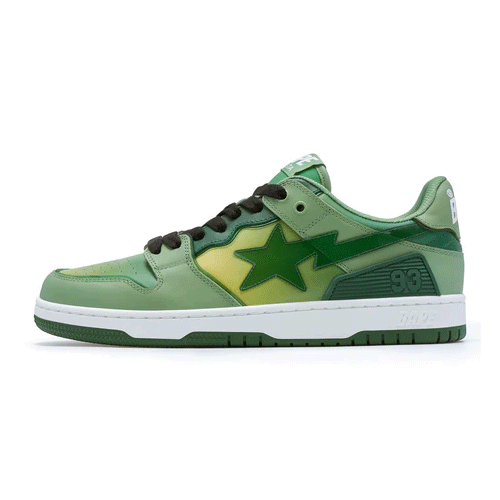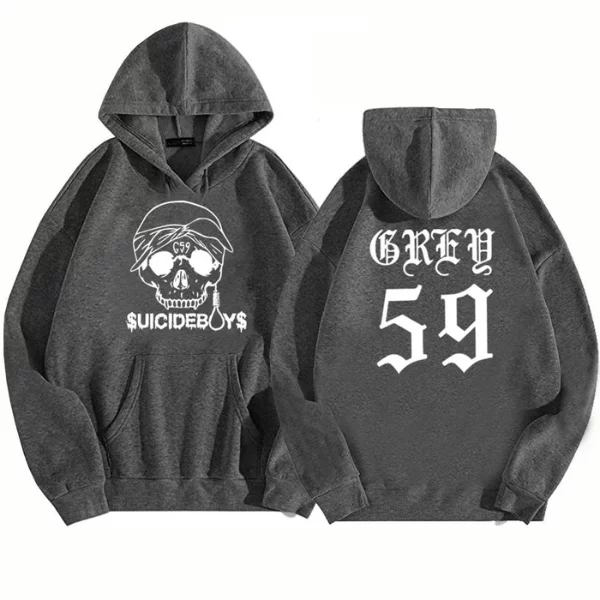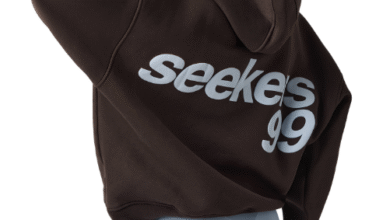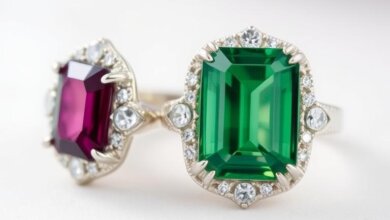The Rise of Bapesta: A Streetwear Icon from A Bathing Ape

The world of streetwear has long been defined by bold statements, limited editions, and cultural impact—and few sneakers embody this more than the Bapesta. Designed by Japanese streetwear label A Bathing Ape (BAPE), the Bapesta quickly rose to legendary status not just for its bold aesthetic but also for its significance in sneaker culture. Whether you’re a seasoned collector or a newcomer to street fashion, understanding the story and influence of the Bapesta is essential.
The Birth of Bapesta: Origins and Inspiration
The Bapesta first hit the streets in the early 2000s. Created by BAPE founder Nigo, the sneaker was a clear homage to the Nike Air Force 1—a silhouette that had become a staple in hip-hop and urban fashion. But rather than simply imitating, Nigo infused the design with a distinctly Japanese flair, adding glossy patent leather, vivid color combinations, and the signature star-shaped “STA” logo in place of the Swoosh.
This reinterpretation wasn’t about copying; it was about recontextualizing a Western classic through the lens of Tokyo’s Harajuku fashion scene. At a time when Japanese streetwear was beginning to gain international traction, the Bapesta stood out as a bold statement of cultural crossover.
Cultural Impact and Celebrity Endorsement
The early 2000s were a transformative period for global fashion. Hip-hop artists were becoming some of the most influential figures in the world of style, and Bapesta sneakers quickly found their way onto the feet of major celebrities. Pharrell Williams, Kanye West, Soulja Boy, and Lil Wayne were just a few of the artists seen rocking Bapestas at the height of their popularity.
Pharrell in particular had a close relationship with Nigo and played a pivotal role in bridging the gap between Japanese streetwear and American hip-hop. Through collaborations and appearances, Pharrell helped bring the Bapesta to the forefront of Western street style.
This celebrity cosign gave the sneaker an aspirational value. Owning a pair meant you were in the know—it meant you were tapped into a culture that thrived on rarity, style, and self-expression.
Design Language: What Makes a Bapesta?
The most noticeable element of the Bapesta is its bold visual identity. Unlike traditional sneakers that often rely on neutral tones or subtle branding, the Bapesta thrives on color, gloss, and attitude. Patent leather finishes became a trademark of the line, offering a unique sheen that instantly set it apart from its more subdued counterparts.
The STA logo, a stylized shooting star, replaces the traditional swoosh, offering a fresh twist that’s both rebellious and iconic. Add to that the “BAPE” text branding on the midsole and heel, and you get a sneaker that’s unafraid to stand out.
Over the years, the Bapesta has been released in countless variations—camouflage prints, animal patterns, neon palettes, and limited-edition collaborations—each one feeding into the hype and maintaining its desirability.
Collaborations and Limited Editions
BAPE has long understood the power of scarcity and collaboration. The brand has dropped limited-edition Bapestas in partnership with global icons like Marvel, SpongeBob SquarePants, Kanye West, Undefeated, and Comme des Garçons. These collaborations are often released in extremely limited numbers, driving both resale value and collector appeal.
In 2007, the Kanye West Bapesta “Dropout Bear” edition became one of the most sought-after sneakers of its time. With artwork directly inspired by Kanye’s College Dropout album, it fused music and fashion in a way that few products had before.
The rarity of these collaborations makes them a must-have for sneakerheads and ensures that Bapesta stays relevant in a fast-moving market.
Bapesta vs. Air Force 1: A Controversial Comparison
The Bape similarities to the Nike Air Force 1 have sparked much debate in sneaker circles. On one hand, the silhouette, midsole, and overall structure are undeniably similar. But BAPE never tried to hide this—in fact, Nigo openly credited the Air Force 1 as his inspiration.
Where the Bape distinguishes itself is in intent and execution. It’s a remix, not a rip-off. It embraces maximalism where the AF1 leans into versatility. It’s louder, flashier, and purposefully niche. That said, legal tensions between Nike and BAPE eventually led to design adjustments in recent years, signaling an evolution in how homage and originality are treated in today’s sneaker ecosystem.
The Evolution of Bapesta in Modern Streetwear
In recent years, BAPE has reintroduced the Bape with updated silhouettes and materials. The brand now produces models that are more refined, higher in quality, and aligned with contemporary sneaker preferences. This includes collaborations with newer artists and brands that keep BAPE at the center of cultural conversations.
What’s impressive is that, despite being over two decades old, the Bapesta still feels fresh. It continues to be a staple at sneaker conventions, in collector closets, and on the feet of style icons across the globe.
Styling the Bapesta: Who Wears It and How?
Wearing a pair of Bape isn’t just about fashion—it’s about making a statement. These sneakers are best paired with other standout streetwear pieces: oversized hoodies, bold graphic tees, distressed jeans, or cargo pants. While the Bapesta isn’t for those who prefer minimalism, it rewards those willing to play with color, proportion, and attitude.
Whether you’re flexing in a full BAPE outfit or mixing high-fashion with streetwear, the Bapesta adds a layer of authenticity and history to your look.
Where to Buy Bape Today
Today, Bape are available through BAPE flagship stores, online drops, and select high-end retailers. However, many coveted editions remain in the resale market, often fetching high prices depending on rarity and condition.
Platforms like GOAT, StockX, and Grailed have become go-to sources for those looking to secure a specific pair, while staying alert for new drops on BAPE’s official channels is crucial for catching new releases at retail.
Why Bapesta Still Matters
In a market flooded with hype and endless releases, the Bape has earned its place as a true icon. It’s not just a sneaker; it’s a symbol of global cultural exchange, creative rebellion, and the evolution of streetwear. While trends come and go, the Bapesta’s story, design, and legacy continue to influence new generations of sneaker lovers.
More than two decades since its debut, the Bapesta remains a bold statement in an industry that thrives on originality—and that alone ensures its spot in the hall of fame of streetwear.
Conclusion
The Bapesta represents everything that makes streetwear exciting: bold design, cultural depth, and an ever-evolving legacy. For fashion enthusiasts and sneakerheads alike, it serves as both a piece of history and a modern-day essential. Whether you wear it for its aesthetic, its symbolism, or its connection to music and art, the Bapesta is a true icon—one that continues to define and defy the rules of the game.







